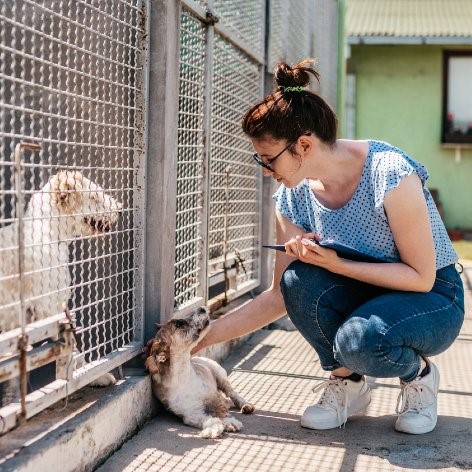What are brown dog ticks?
Brown dog ticks (Rhipicephalus sanguineus) are widely distributed throughout Australia. Although these ticks do not cause paralysis (which is caused by paralysis ticks), they can cause skin irritation and can make dogs anaemic from excessive blood loss when attached in large numbers. Dogs are the primary host for the brown dog tick, although they may bite humans or other mammals if no dogs are around.
Brown dog ticks can also transmit bacteria from one dog to another, such as Ehrlichia canis. This potentially fatal brown dog tick disease was identified in Australia for the first time in 2020.
What do brown dog ticks look like?
Brown dog ticks are reddish-brown in colour and 3mm - 10mm in length. They have oval, flattened bodies which expand when filled with blood. Nymph (immature) and adult stages have eight legs, while the larval stage has six legs. When engorged, their bodies become lighter and tan in colour.
Where are brown dog ticks found?
In Australia, the brown dog tick is present in all states and territories. It is most common in temperate regions of Australia. Occasionally, brown dog ticks are found in urban areas, like Sydney and Melbourne.
Brown dog ticks thrive in warm regions of Australia. In colder areas, they are capable of surviving winter within kennels and homes. Brown dog ticks feed on the same dog at each stage of their lifecycle and are often found in a dog's kennel, bedding or garden. After feeding, females drop off and can lay up to 5,000 eggs.
Symptoms of Brown Ticks on Your Dog
Brown dog tick symptoms may include skin irritation or the ‘pallor’ or pale appearance associated with anaemia from blood loss if many ticks attach at the same time. When feeding, the tick buries its head into your dog's skin, which causes a red, raised area that you can feel along with the tick, similar to a small lump or wart.
How to Prevent Brown Dog Ticks
Given the spread of ticks throughout Australia, all dog owners are strongly encouraged to have their dogs on a tick control program, search them daily for any ticks, and be on the look-out for signs of associated disease. The most crucial step in the fight against ticks is prevention. There are many different types of tick preventatives available in Australia. Some products are available over the counter, while others are only available through your veterinarian.
Effective monthly preventatives applied as a spot-on to the skin at the back of the neck are a very convenient control method for these external parasites.
Tablets given monthly or every three months to control ticks are effective, and collars or sprays can add another layer of protection.
Your veterinarian can help to make specific recommendations to keep your dog parasite free. It is important to remember that no prevention gives a 100% guarantee, so combining a few methods will help minimise risk and protect your dog.
How to Treat Ticks
In your home, keep grass nice and short and keep dogs away from bushy areas. Clipping long-haired dogs in spring and summer can help with tick checks, when searching their bodies for any tick ‘hitch-hikers’.
Even when on tick prevention, it is still a good idea to check your pet for ticks daily, particularly after going out for walks.
When checking, feel for small lumps and make sure you look in 'hidden' places such as under the collar, between toes, their paws, gumline and inside their ears.
If you find a tick on your pet, it is best to remove it as quickly as possible. A specifically-designed tick twister is best but you can also use fine-tipped forceps if you’re confident in using them. Contact a vet if you find a tick, and you are unsure how to remove it.
Important Points
- Use regular tick prevention on your pet. There are many options available to suit your lifestyle.
- Search your pet for ticks daily, especially in warmer months and after long walks
- Be aware if travelling with your pet to areas known for having ticks
- Visit the nearest vet clinic ASAP if you have found a tick you cannot remove or call if you have any questions or concerns.
* This information is provided as general information only. For specific advice and information regarding your pet, we recommend that you seek the advice of your veterinarian.








